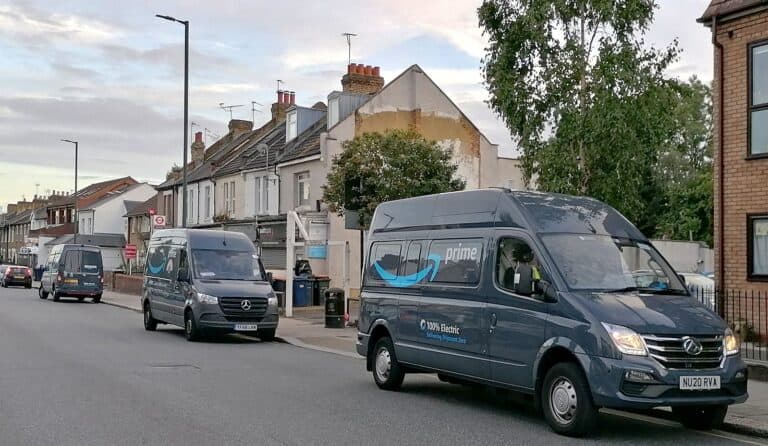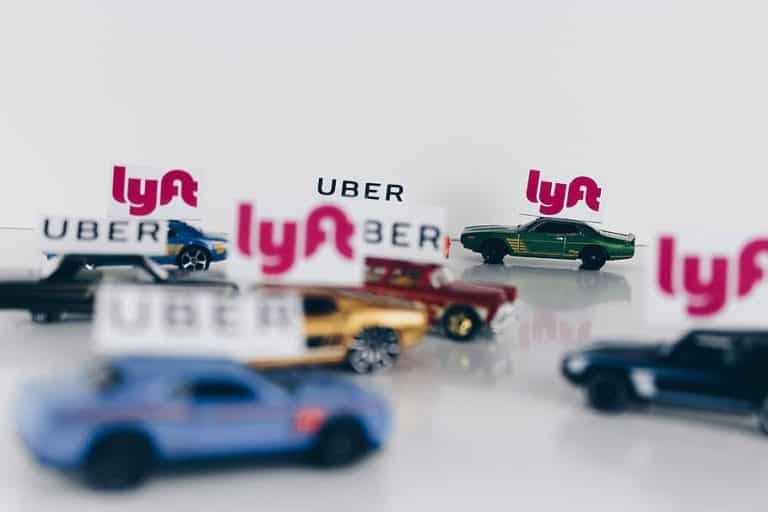Kelsey MacKinnon is a student at Harvard Law School and a member of the Labor and Employment Lab.
Uber recently announced a deal to list all New York City yellow cabs on its app. Given the hostile history between Uber and the taxi industry, this partnership comes as a surprise to many. But it is not a one-off — in February 2022, Uber revealed its goal of putting every taxi in the world on its app by 2025. Many, including Uber’s global mobility chief Andrew Macdonald, recognize the irony: once dedicated to disrupting the traditional taxi industry, Uber is now turning to cabs to fuel its growth. What led to this unlikely strategy, and what does it mean for taxi and Uber drivers?
The Pandemic’s Impact
When the pandemic hit the U.S. in March 2020, business for Uber and taxi drivers came to a near halt. In NYC, both Uber and cabs have seen travel demand start to bounce back, but neither are yet operating at pre-pandemic levels.

The economic shock of the pandemic is, in part, what led Uber to view yellow cabs as possible sources of growth, rather than as zero-sum rivals. Uber has seen rider demand rebound faster than driver supply, leading to higher fares and longer wait times for customers. By listing taxis on its app, Uber is able to increase its driver pool by tapping into an existing supply, rather than by recruiting new drivers — which it has struggled to do in the tight labor market, especially as gas prices soar. For taxis, the hope is that access to Uber’s customer pool will enable them to complete more rides and collect more fares. Uber has framed the deal as a win-win-win: it gets access to the taxi industry’s supply of drivers, cabdrivers get access to Uber’s customer demand, and riders get lower fares and shorter wait-times. But given Uber’s ambitious plans to put every taxi in the world on its platform, one might question if this strategy is truly for the benefit of the taxi industry in the long term.
The NYC Uber–Yellow Cab Deal
Uber has not shared all the terms of its NYC yellow cab deal, but the basic mechanics are as follows. Uber is partnering with Creative Mobile Technologies (CMT) and Curb Mobility, two TLC-licensed technology companies that provide software to the city’s roughly 14,000 taxis. CMT and Curb already provide cabdrivers Uber-like platforms that enable them to accept e-hails in addition to traditional street hails; currently, riders in NYC can use CMT’s Arro app, or Curb Mobility’s Curb app, to request taxi rides. Through this deal, CMT and Curb will integrate their software with Uber’s, so that taxis will be listed on Uber’s app, and Uber’s customers will be listed on taxis’ e-hailing platforms. Therefore, riders will no longer have to use Arro or Curb to order a taxi via app — they will be able to do so directly through Uber.
Once the integration is implemented, cabdrivers using the CMT or Curb platforms will automatically see e-hail requests from Uber customers, but they will have the option to block these trips if they do not want to perform Uber rides. For any Uber rides completed by cabdrivers, both Uber and its taxi technology partners will take a cut of the fare. While the companies have declined to reveal their exact share, Uber’s take rate in general is about 20% per ride.
Cabdrivers, unlike Uber drivers, will be able to see their expected earnings before accepting Uber trips, and they will be free to decline Uber ride requests without penalty. While they will continue to receive their standard metered rates for any CMT- or Curb-originated e-hails, as well as for street hails, they will be paid according to Uber’s pricing algorithm for any Uber rides they accept. Because Uber’s pricing rates fluctuate according to factors like time of day and real-time demand, taxi drivers could earn more, less, or roughly the same for completing Uber rides as they would under the metered rate.
The NYC deal is not the first time Uber has listed taxis on its platform. In the past few years, Uber has formed partnerships with taxi software and fleet operators in several countries, including Spain, Austria, Germany, Colombia, Turkey, South Korea, and Hong Kong. But the NYC deal is the first of its kind in the U.S., where a city’s entire taxi fleet will be automatically integrated onto Uber’s platform, with drivers given an option only to opt-out, rather than to opt-in. This strategy reduces friction for cabdrivers’ participation and increases the likelihood that Uber will get close to achieving its goal of full taxi integration.
Implications for Drivers
Bhairavi Desai, the Executive Director of the New York Taxi Workers Alliance (NYTWA), which represents 21,000 drivers in NYC, has criticized the deal, estimating that taxi drivers will earn an average of 15 percent less per trip by completing Uber rides than they would under the metered rate — without even accounting for the fact that Uber riders may be less likely to tip than taxi riders. As Desai put it: “[T]he fare structure that is not enough for Uber drivers is also not going to be enough for yellow cab drivers.” Desai has called on cabdrivers to hold out on performing Uber rides until they have negotiated better terms with Uber, the taxi technology partners, and the city, including a raise on the metered rate; metered rates for all rides performed by cabdrivers, including Uber-originated rides; and just cause protection for taxi and Uber drivers alike.
While some yellow cab drivers have expressed optimism about the deal, others are skeptical that Uber will actually help the taxi industry. Some Uber drivers have also expressed concern that they will lose business now that they will be in more direct competition with cabs. Emma Woods, a spokesperson for Justice for App Workers, which represents 100,000 ride-hail drivers and delivery workers in NYC, welcomed yellow cab drivers to join their movement in seeking better pay and protection for app-based drivers.
Skepticism of Uber’s taxi-integration strategy is likely well founded. If enough taxis begin performing Uber rides, receiving Uber wages, and giving cuts of their fares to Uber, Uber will have essentially absorbed the taxi industry. With the increased market dominance it would achieve, Uber would obtain even greater power to set the terms of drivers’ work and pay.
Questions also remain regarding the exact nature of the relationship between Uber and cabdrivers. Matt Daus, the former chairman of TLC, noted that Uber is likely giving cabdrivers the option to decline Uber rides penalty free in order to insulate the company from legal challenges over the employment classification of cabdrivers. But it is currently unclear what other forms of control Uber might exert over participating cabdrivers, such as whether cabdrivers will face deactivation from Uber’s platform if their ratings from Uber customers fall below a certain level.
With a similar taxi-integration deal already announced in San Francisco, Uber is wasting no time in turning its vision of a world in which “taxis and Uber [do not] exist separately” into reality. As the NYTWA and others have called for, taxi and Uber drivers must have a seat at the negotiating table to ensure their interests are not run over in Uber’s quest for profit.









Daily News & Commentary
Start your day with our roundup of the latest labor developments. See all
January 7
Wilcox requests en banc review at DC Circuit; 9th Circuit rules that ministry can consider sexual orientation in hiring decisions
January 5
Minor league hockey players strike and win new deal; Hochul endorses no tax on tips; Trump administration drops appeal concerning layoffs.
December 22
Worker-friendly legislation enacted in New York; UW Professor wins free speech case; Trucking company ordered to pay $23 million to Teamsters.
December 21
Argentine unions march against labor law reform; WNBA players vote to authorize a strike; and the NLRB prepares to clear its backlog.
December 19
Labor law professors file an amici curiae and the NLRB regains quorum.
December 18
New Jersey adopts disparate impact rules; Teamsters oppose railroad merger; court pauses more shutdown layoffs.